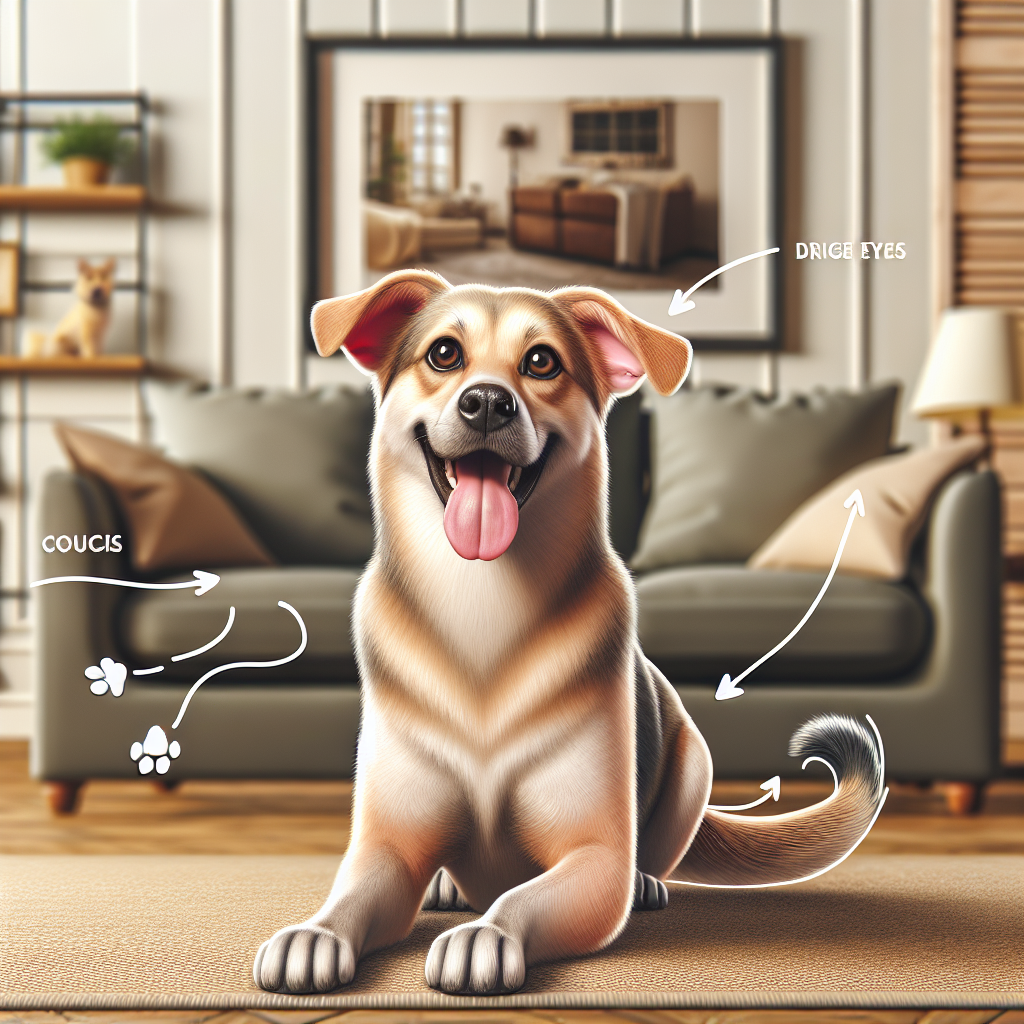Understanding the Flea Problem

Alright, let’s dive right into this pesky flea problem. If you’ve ever dealt with fleas, you know they’re more than just annoying little bugs. These tiny creatures have a knack for turning a peaceful home into a battleground. I still remember the first time I realized my home had been invaded. It felt like a scene from a horror movie, and I was the unsuspecting lead character. Understanding their lifecycle is crucial in combating them effectively. Fleas go through four stages: egg, larva, pupa, and adult. Knowing this can help you break the cycle at the right stage.
These critters are small, but they bring big problems. Fleas feast on your pets, leaving them itchy and miserable. Worse, they can carry diseases. The first step in getting rid of fleas in your house is to understand their lifecycle. Fleas breed quickly, and before you know it, your house can become a flea wonderland. Each flea can lay about 40 to 50 eggs a day, which can roll off your pet and scatter all over your home. Once you grasp this, you’ll see why it’s vital to tackle this issue head-on.
Recognizing Flea Infestation Signs
Now, how do you know if you’ve got a flea infestation on your hands? Well, it all started for me when I saw my dog scratching like he was trying to dig to China. One tell-tale sign is your pet’s behavior. Excessive scratching, biting, or licking may indicate fleas. You might also notice small, red bumps on their skin.
I remember finding tiny black specks on my pet’s bed and thinking it was just dirt. Turns out, it was flea dirt – flea poop, to be exact. You can test this by placing the specks on a damp paper towel. If it turns reddish-brown, you’ve got flea dirt.
Another sign is spotting fleas hopping around your home. These little jumpers are fast, so catching a glimpse can be tough. But trust me, once you spot one, you’ll start seeing them everywhere. It’s a bit like when you learn a new word and suddenly hear it everywhere. Your poor pets are only part of the problem. Fleas can jump up to 8 inches, so they can easily go from your pet to your carpet, furniture, or even you.
The Importance of Treating Your Pets First
Let’s get one thing straight right away: your pets are where you need to start. Treating pets for fleas should be your first line of defense. Here’s why. Fleas love your pets. They’re basically a flea buffet. If you don’t tackle the fleas on your pet, you’ll keep battling them in your home, and that’s a losing game.
Back in the day, I learned the hard way that skipping this step is like bailing out a sinking boat with a spoon. You need to go big. There are various pet flea treatment methods available – sprays, collars, oral medications, and shampoos. The options can be overwhelming, but they each have their place. Personally, I’ve found that a mix of these treatments works best. Consult with your vet to find the right solution for your pet. The vet’s advice is worth its weight in gold, trust me.
Treating your pets doesn’t just help them; it helps you too. Once your pets are free of fleas, you’ll notice fewer fleas jumping around your house. It’s a win-win situation. Remember to keep this up regularly, not just when you see fleas. Prevention is key here.
Cleaning Your Home to Eliminate Fleas
With your pets on the road to being flea-free, it’s time to roll up your sleeves and tackle your home. Here’s where some good old-fashioned elbow grease comes in. Cleaning tips for fleas are essential. Start by vacuuming everything. I mean everything – carpets, rugs, furniture, and even your car if your pet rides with you.
I used to think vacuuming was just for crumbs and dust. Turns out, it’s one of the best weapons against fleas. Vacuuming picks up fleas, larvae, and eggs. Don’t forget to empty the vacuum bag or canister outside immediately. You don’t want those critters crawling back out.
Wash all bedding, including your pet’s, in hot water. Fleas can’t survive the heat, so crank up that temperature. It’s a bit like a spa day, but for your sheets. I once made the mistake of skipping this step, and let me tell you, that was a long night of scratching.
For hard-to-wash items, consider using a steam cleaner. The heat from the steam can kill fleas at all stages of their lifecycle. It’s like bringing out the big guns, and it’s pretty satisfying too.
Natural Remedies for Flea Control
Now, I know everyone’s looking for that magic bullet. Something easy and effective, right? Natural flea remedies can be a great addition to your flea-fighting arsenal. They’re not a cure-all, but they can help keep the fleas at bay. One of my personal favorites is setting up a flea trap. Place a shallow dish of soapy water under a light. The fleas are attracted to the warmth and light, hop in, and drown. It’s simple, but it works.
Another option is using diatomaceous earth, a natural powder that kills fleas by dehydrating them. It’s like a desert for fleas. Just sprinkle it on carpets and leave it for a day before vacuuming. Always use food-grade diatomaceous earth, and be cautious if you have pets or kids around.
Essential oils like lavender or cedarwood can also deter fleas. Mix a few drops with water and spray it around your home. It smells great and gives fleas the boot. Just be sure to check that the oils are safe for pets, as not all are.
I remember trying these remedies and feeling like a mad scientist mixing potions. It’s fun, but remember, consistency is key. Keep at it, and you’ll start to see results. You’ll be thanking yourself for the effort.
At the end of the day, dealing with fleas is all about persistence. It’s a bit like running a marathon. You’ve got to keep going, keep pushing. So hang in there. You’re not alone in this fight. Thanks for sticking with me through this. Good luck, and may your home be flea-free soon.
Deep Clean Your Home: Tackle Every Corner
Hey there, fellow flea fighters! Let’s dive into the nitty-gritty of deep cleaning for fleas. Trust me, I know it sounds like a chore, but it’s your best bet for kicking fleas outta your house for good. And when I say deep clean, I mean you gotta tackle every nook and cranny, and I mean *every* single one. I remember one Saturday, I spent the whole day moving furniture and vacuuming like there was no tomorrow. It was tiring, but oh-so-worth it in the end.
Start with vacuuming your carpets, rugs, and even the furniture. Fleas love to hide in these cozy spots. And don’t forget to empty that vacuum bag right away, or those little critters might just crawl back out. My friend learned that the hard way—talk about a nightmare!
Then it’s time to wash your bedding, and your pet’s too. Hot water’s your friend here. If you’ve got a steamer, even better. Steam cleaning can really help zap those pesky fleas. I’d say it’s like giving your home a fresh start. You might even find a few bucks’ worth of coins under the couch like I did. Bonus!
I also recommend hitting the baseboards and corners with a good scrub. Fleas are sneaky, and they love these spots. I once found a whole hidden colony behind my TV stand. Yikes! It was a wake-up call for me to be more thorough.
Natural Remedies: Safe Alternatives for Flea Control
Now, let’s chat about natural flea control remedies. These are safe alternatives that many folks swear by. I’ve tried a few myself, and let me tell ya, they’re worth a shot. One of my favorites is diatomaceous earth. Sprinkle it around, and it does wonders. Just be sure to get the food-grade kind. My sister once bought the wrong type, and it was a bit of a disaster.
Essential oils are another great option. I tried lavender oil once—not only did my house smell like a spa, but I felt better knowing it was safe for my pets. Just a few drops on their collars, and we were golden. Plus, who doesn’t want their house to smell like a lavender field?
Vinegar and water can also work as a homemade flea solution. I use it to wipe down surfaces, and it seems to help. It’s cheap and easy, and you probably already have it in your pantry. Give it a go!
If you’re into gardening, planting some flea-repelling herbs like rosemary or mint around your house can be a good move. My garden’s become my little flea fortress, and it feels like an extra layer of protection.
Chemical Treatments: When and How to Use Them
Alright, if natural ain’t cutting it, there’s always the chemical route. It’s like bringing in the big guns. Chemical flea treatments at home are effective, but timing and method are everything. Read those labels carefully, and maybe even consult a pro. I once went this route in the middle of a summer infestation nightmare, and it was a game-changer.
There are sprays, powders, and foggers to choose from. Personally, I’ve had good luck with sprays. They’re easy to use and get into those hard-to-reach places. Just don’t forget to ventilate your home afterward. I made that mistake once, and, well, let’s just say it wasn’t pleasant.
And remember, some of these treatments can be harsh on pets. Make sure you use safe flea treatments for pets and follow the instructions to a T. I once used a product that was too strong and ended up at the vet with my poor cat. Not fun, and definitely not cheap. Lesson learned!
Battling Fleas on Pets: Keeping Your Furry Friends Safe
Don’t forget your pets! They’re often the unwilling hosts, poor things. Regular baths and vet-recommended treatments can help keep them safe and comfy. My dog, Max, hates baths, but he’s always much happier after one, bolting around the house like a pup again.
Use a gentle flea shampoo, and give your pet a good scrub. It’s not just about killing fleas but also soothing their skin. Trust me, they’ll thank you for it. And while you’re at it, a good flea comb can help too. It’s a bit time-consuming, but oh-so-satisfying when you see those fleas go bye-bye.
Your vet can also recommend some effective treatments, whether it’s a topical solution or a chewable tablet. I always check in with mine because they know Max’s needs best. Plus, they’ve got the inside scoop on what’s working and what’s not.
Don’t forget about flea collars. They’ve come a long way and can be a great addition to your flea-fighting toolkit. My neighbor swears by them for her cat, and they seem to do the trick.
Monitoring and Prevention: Staying Flea-Free
And finally, let’s talk prevention and monitoring. Staying flea-free is an ongoing battle, but with vigilance and the right steps, you can keep those pests at bay. It’s like a little insurance policy for your peace of mind.
Regularly check your pets for fleas, especially after walks or playdates with other animals. I do a quick comb-through with Max every week, and it helps catch any hitchhikers before they become a problem.
Invest in some flea prevention tips for pet owners, like keeping your yard tidy and using flea-repelling plants. It’s all about creating an unwelcoming environment for fleas. I’ve turned my backyard into a mini fortress, and it’s been a huge help.
And keep an eye out for any signs of a flea infestation. Monitoring flea infestations early can make all the difference. If you see your pet scratching more than usual, or find flea dirt around the house, act fast!
Thanks for sticking with me through this journey. You’re well on your way to a flea-free home. Keep at it, and remember, you’ve got this!
Using Natural Remedies to Combat Fleas
Alright, folks, let’s dive into the nitty-gritty of getting rid of fleas in your house using natural remedies. You might be scratching your head, wondering if these methods actually work. Well, I’ve been around dogs and cats my whole life, and I can tell ya, they do! Natural flea remedies for home aren’t just a myth. They can be a game-changer, especially if you’re looking to avoid chemicals.
First off, let’s talk about diatomaceous earth. It’s a mouthful, I know. This stuff is like magic powder. Sprinkle it on carpets, pet bedding, and even in those sneaky corners where fleas love to hide. It dries out the fleas, killing them without any fuss. Just remember to vacuum it up later, or you’ll have a dusty home!
Another favorite of mine is the good ol’ lemon spray. Ever heard of it? Just slice a lemon, boil it in water, and let it steep overnight. Pour this into a spray bottle, and you’ve got yourself a natural flea repellent. Spray it on your pet’s bedding or around the house. Fleas hate the stuff!
Don’t forget about those essential oils. But hold your horses! Not all oils are safe for pets. Lavender and cedarwood are usually fine and can help keep those pesky fleas at bay. Mix a few drops with water, and spritz around your home. It smells good, and fleas don’t stand a chance.
And then there’s vinegar. I’ve got a love-hate relationship with the stuff, but it works wonders. Mix it with water and use it as a spray. Fleas can’t stand the smell, and it might just send them packing.
Maintaining a Flea-Free Environment
So, you’ve booted the fleas out of your house. What’s next? Maintaining a flea-free environment is key. Trust me, you don’t want these little pests sneaking back in. Here are some flea-free home maintenance tips I’ve picked up over the years.
First, vacuum like your life depends on it. Okay, maybe not that dramatic, but vacuuming is essential. Fleas love hiding in carpets and upholstery. When you vacuum, you’re not just sucking up dirt; you’re also getting rid of fleas and their eggs. Make it a weekly routine.
Wash your pet’s bedding regularly. Fleas love to nest in warm, cozy spots. A hot wash will kill any eggs or larvae hiding there. It’s a small step, but it makes a big difference.
Keep your lawn trimmed. Overgrown grass and shrubs are like a flea playground. By keeping your yard neat and tidy, you’re cutting down on their hiding spots. Plus, it makes your garden look nice!
Lastly, consider using flea traps. These are simple devices that attract fleas with light. They’re not a cure-all, but they can help reduce the flea population in your home.
When to Call in the Professionals
Sometimes, despite your best efforts, fleas just won’t budge. It’s frustrating, I know. That’s when you might need to call in the professionals. But what are the professional flea exterminator costs, you ask? Well, it ain’t cheap, that’s for sure. You’re probably looking at anywhere from $150 to $500, depending on the size of your home and the severity of the infestation.
But here’s the thing. A professional flea treatment can be worth every penny. These folks have tools and methods that go beyond what you can do at home. They can get rid of fleas in your house much faster and more efficiently.
If you’re hesitant, consider the long-term costs of not taking action. Fleas can cause health issues for both your pets and your family. Sometimes, it’s better to bite the bullet and get the pros in.
Don’t forget to ask about professional flea treatment options. They might offer different packages or methods, and it’s worth knowing your options. Plus, a chat with a pro can give you some insights into how to keep your home flea-free in the future.
Understanding the Flea Life Cycle
Let’s get a bit nerdy for a second. Understanding the flea life cycle is crucial in the battle. These little buggers don’t just pop up overnight. Knowing their cycle can help you target them more effectively.
Fleas go through four stages: egg, larva, pupa, and adult. The whole cycle can take a few weeks to several months, depending on the environment. Eggs are laid on the host but often fall off into the environment, like your carpet or pet’s bed. Larvae hatch and feed on organic matter. Then, they spin cocoons and become pupae. This stage is tricky because they can stay cocooned for months until conditions are right.
Knowing this, you can see why a single treatment won’t do the trick. It’s a process. You might kill the adults, but those eggs and larvae are biding their time. Regular cleaning and treatments are crucial here.
Encouraging Flea Prevention Habits
Alright, let’s wrap this up with some good habits to prevent flea infestation. Prevention is better than cure, right? So, let’s get into some habits that can help keep fleas at bay.
First, regular grooming. Brush your pets regularly and keep an eye out for fleas or flea dirt. This not only helps catch fleas early but also keeps your pets comfortable.
Use flea prevention products. There are plenty of options out there, from collars to topical treatments. Find one that works for your pet and stick with it. Consistency is key.
Keep your house clean. I know, easier said than done. But regular cleaning can make a big difference. The cleaner your home, the fewer places fleas have to hide.
Lastly, be vigilant. Fleas can hitch a ride into your home in various ways, like on your clothes or through open windows. Keep an eye out for new signs of fleas, especially if you’ve been somewhere new with your pets.
Thanks for sticking with me through this flea saga. Getting rid of fleas in your house isn’t a walk in the park, but with a bit of elbow grease and know-how, you can do it. Remember, you’re not alone in this battle. Keep at it, and soon you’ll have a flea-free home. Good luck, and take care!
Quick Takeaways:
Alright, let’s wrap things up on how to get rid of fleas in your house. You know it’s not just about one big clean; it’s a bit more of a lifestyle change. First off, spotting flea infestation signs early on is crucial. You might notice your pets scratching like crazy or see tiny dark spots in their fur. When that happens, it’s time to spring into action.
Start with treating your pets for fleas. Regular baths and vet-prescribed treatments are your go-to moves here. My golden retriever, Max, is no fan of baths either, but it really makes a difference.
Next, get your cleaning game on point. Vacuum often and wash your pet’s bedding. One time, I spent a whole weekend scrubbing and vacuuming everything. It was exhausting, but oh-so-satisfying when I saw fewer fleas around. Cleaning tips for fleas often suggest focusing on carpets and upholstery since fleas love to hide there.
Now, let’s talk about natural flea remedies. Essential oils or diatomaceous earth can help. I tried lavender oil, and it was like living in a spa, plus it’s safe for pets. But if that doesn’t cut it, chemical flea treatments at home are a solid next step. Just be sure you’re using them safely.
Lastly, prevention is your best friend. Keep an eye on things and use flea prevention tips for pet owners. Regular checks and treatments can save you a lot of hassle down the road. Remember, it’s all about staying vigilant. You’ve got this!
FAQs:
1. What are the first signs of a flea infestation in my home?
When you’re figuring out how to get rid of fleas in your house, spotting them early is key. Look for flea infestation signs like pets scratching more than usual, red bumps on their skin, or finding flea dirt, which looks like tiny black specks. Once you see these signs, start treating your pets and cleaning your home right away.
2. Can I use natural flea remedies for home control effectively?
Absolutely! Natural flea control remedies like essential oils and diatomaceous earth can be quite effective. I once used lavender oil, and it helped while making my home smell great. Just remember, natural methods might take a bit longer, so patience is key. But if you’re looking for safe flea treatments for pets and the environment, these are worth a shot.
3. How often should I clean my house to control fleas?
When it comes to home flea control, regular cleaning is your ally. Vacuum carpets, wash bedding, and clean pet areas weekly. During a heavy infestation, you might need to clean more often. I remember during one bad flea season, I vacuumed every other day for a couple of weeks. It felt like a lot, but it worked wonders.
4. Are chemical flea treatments safe to use at home?
Chemical flea treatments can be effective, but safety is key. Always follow the instructions and consider consulting a professional if you’re unsure. I used them once during a summer outbreak, and they worked well, but I made sure to keep my pets away until everything was dry and safe.
5. What steps can pet owners take to prevent flea infestations?
Prevention is your best defense in learning how to get rid of fleas in your house. Use pet flea treatment methods regularly, like monthly topical treatments or oral meds. Keep your home clean and check your pets often. I always give Max a quick check after hikes or trips to the park, and it helps catch any hitchhikers early.
Conclusion:
So, there you have it—a comprehensive guide on how to get rid of fleas in your house. It’s a combination of treating your pets, cleaning your home, and using the right treatments. The journey might feel like a big task, but with each step, you’re closer to a flea-free home. Remember, understanding the flea lifecycle is crucial to interrupting their breeding and keeping them at bay.
I’ve been there, spending weekends deep cleaning for fleas and trying different solutions. It’s all about finding what works best for you and your furry friends. Stay patient and persistent. Whether you lean towards natural flea remedies or need to call in the big guns with chemical treatments, the important thing is to stay on top of it.
Thanks for sticking it out with me. I hope you’re feeling more equipped to tackle this pesky problem. Keep at it, and soon enough, you’ll enjoy the peace of mind that comes with a flea-free home. You’ve got this, and your pets will thank you for it!
References:
1. https://www.webmd.com/pets/kill-fleas-at-home
2. https://www.cdc.gov/fleas/section-name/index.html
3. https://uk.frontline.com/pet-advice/seen-multiple-fleas-house
4. https://www.healthline.com/health/healthy-home-guide/how-to-get-rid-of-fleas
5. https://www.entirelypets.com/how-to-get-rid-of-fleas.html
Our solution eradicates fleas on contact without harmful chemicals, ensuring a safe environment for your pets and family. Easy to use and highly effective, SayByeBugs helps you maintain a flea-free home. Learn more and order today at SayByeBugs.com








